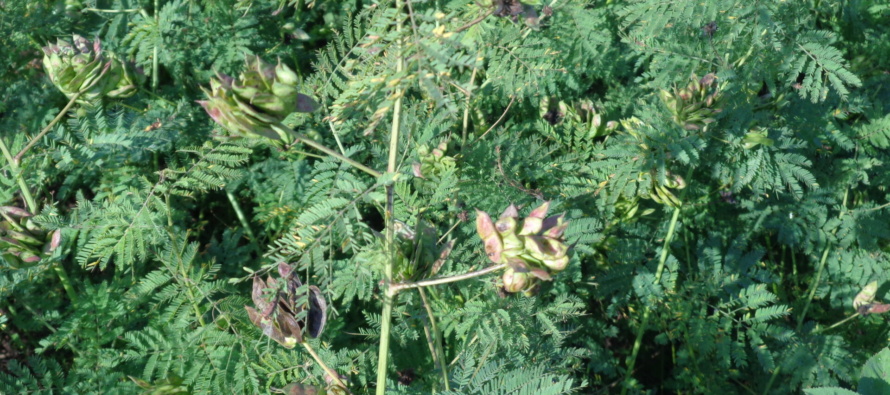Illinois Bundleflower

Related Articles
- Calcium and Magnesium For Mississippi Crops 0
- March 11 Precision Agriculture Workshop 0
- Ground Speed Affects Spray Droplet Deposition 0
Latest Tweets
Illinois Bundleflower
Weed flora of Mississippi
Prepared by
Taghi Bararpour and Jason Bond
Family: Fabaceae (legume)
Genus: Desmanthus Species: illinoensis
History: Illinois bundleflower is a native, warm-season, perennial, leguminous broadleaf plant adapted to the central and eastern regions of the United States from Mexico into Canada. Illinois bundleflower is found in prairie remnants, sloughs, woodland edges, or disturbed areas.
Life Cycle: Perennial
Special Characteristics: Species of genus Desmanthus are legumes. Most legume species harbor beneficial bacteria called rhizobia on their roots. Illinois bundleflower blooms in summer and fall after rain. Visually, it is interesting for its fern-like leaves and “bundled” tangles of seed pods. It is cold and heat tolerant and attracts butterflies. It may grow 4 to 5 feet tall. It will flower from June through August, and the round clusters appear fuzzy due to long stamens projecting from each flower. The flowers will be visited by some nectaring bees. The Illinois bundleflower is an attractive plant in the landscape because of its unique fern-like appearance and the closing and opening of the leaves in response to sunlight and heat. The species is hermaphroditic (has both male and female organs) and is pollinated by insects.
Stems: Multiple stems grow from a woody caudex which is in turn attached to a deep taproot. Stems are erect, smooth, angular, and grooved.
Leaves: Alternate (bipinnately compound leaves), fern-like leaves.
Flower: White flowers contain five sepals, petals, and stamens and are borne in “powder puff” globose heads.
Seeds / Fruit: Self-pollinated flowers produce clustered flat scythe-shaped pods each about 1 to 1.5 inches long and containing two to six seeds.
Alternate names: Illinois mimosa, Illinois desmanthus, Illinois bundle weed, Prickleweed, and false sensitive plant.
Economic significance: Flower heads are occasionally visited by small bees and flies that seek nectar and pollen. The medium-sized seeds are consumed by various upland gamebirds, including pheasant, bobwhite quail, and greater prairie chicken. The Land Institute’s research in developing Illinois bundleflower as a perennial seed crop examined the species’ nutritional value, nitrogen fixation capability, and potential for genetic improvement.





Let me tell You a sad story ! There are no comments yet, but You can be first one to comment this article.
Write a comment